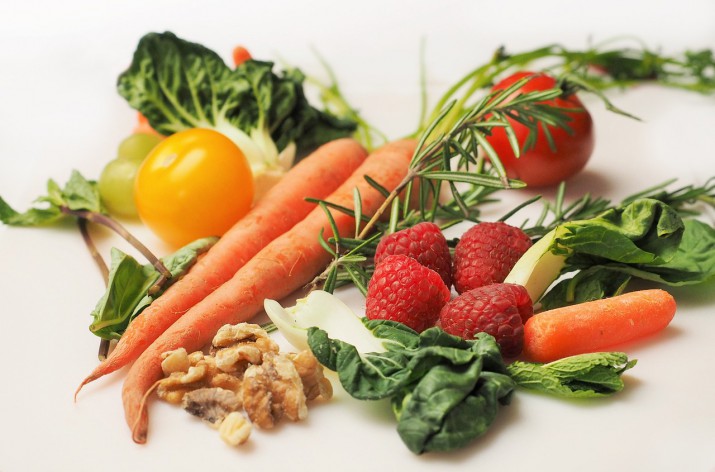To maintain overall health it is crucial to balance body’s chemistry between the proper ratios of acid and alkalinity in your diet. Here is everything you should know about your internal pH and how to get it balanced!

Who remembers from grade school (or maybe high school) that awesome blue and red scale?! The one where you used those little test strips to see what the pH was of random liquids… and then thought to yourself, who gives a FRICK!? Why does it matter to me?! Yeah, I was there once too… Then I taught kids who also had the same concerns. It wasn’t until I started understanding the body and it’s biochemistry that it really started to hit home.
For those of you who have forgotten, here’s a quick review of acids and bases on the most basic level.
- The pH scale runs from 0-14 with 0-6.9 being acidic and 7.1-14 being basic (alkaline)
- 7.0 is neutral… aka Water.
- The stronger the acid, the lower the number. The stronger the base, the higher the number.
Here’s a great visual for reference:
Importance of alkalinity
Balancing your body’s chemistry between the proper raitos of acidic and alkaline foods is critical to maintaining overall health. Everyday we put foods into our bodies that sway our overall alkalinity one way or the other. In addition, most people consume foods that lead to a pretty toxic level of acidity without even knowing that is happening.
A high-acid internal environment is one of the leading causes of fatigue, obesity, and disease. The biggest priority your body has is to maintain a level of alkalinity in the body that supports cellular function. The body itself has great regulatory systems through respiration, circulation, digestion, and hormonal production that functions to remove excess acid residues from the body tissues. However, if the body varies too much left or right of optimization, our cells become intoxicated with wastes and die.
While different tissues in the body prefer different levels of acidity and alkalinity (stomach and urine prefer an acidic environment where as your blood and most body tissues prefer an alkaline environment), it’s the body’s alkaline reserves that are of major importance. Once these reserves are tapped out, the cells begin to degrade and normal body functions become compromised.
Consequences of an overly acidic internal pH
Here are 8 complications you may encounter when your body is out of balance:
1. Weight Gain.
Too much acid in the body causes the body to produce more insulin and in turn store more fat.
2. Reduces Oxygen Supply.
Too much acid decreases the ability for hemoglobin in the blood to transport adequate amounts of oxygen. This can lead to a compromise of body functions.
3. Premature Aging.
Due to the free radical damage of cell walls and membrane structures accelerated by the acidic environment of the body, you may begin to age prematurely, reduce eyesight, have memory issues, etc.
4. Irregular Blood Pressure.
Due to the degradation of smooth muscle tissue and the inner walls of arteries and veins.
5. Increased potential for urinary problems and infections.
Acidosis disrupts lipid and fatty acid metabolism and can lead to problems within the endocrine system which will manifest themselves in the form of increased potential for urinary issues.
6. Increases the likelihood of cellular mutations.
7. Disrupts electrolyte balance.
8. Reduction in energy.
8 ways to bring your body back into balance
1. Put fresh squeezed lemon in your water daily!
2. Keep a fresh salad in the refrigerator. Greens are the magic pill for maintaining alkalinity! If you have trouble eating a salad every day, or even getting the proper variety of vegetables, check out these greens-on-the-go!
3. Properly combine your foods:
– Eat organic local fruits on an empty stomach and in season
– Refrain from eating carbs (starches) and protein together
– Eat green veggies with proteins
4. Substitute white or wheat bread for a healthier sprouted wheat bread. Or cut gluten all together.
5. Use spices: Bragg Amino Acids, fresh herbs, Celtic sea salt, etc.
6. Drink one-to-four ounces of wheatgrass per day.
7. Eliminate unhealthy, processed foods from your diet (ie. fast food, packaged foods, etc.)
8. Experiment and have fun! Need a nutritionally designed meal that will support your body systems and cellular function when you are on the go? Check out my favourite dairy-free go-to!
Living a healthy lifestyle does not have to be difficult. It just requires the decision to fuel your body for success rather than react to the circumstances around you. Being proactive is always better than reactive. And if you are thinking to yourself: “it’s just too expensive to eat healthy…” I’d like to ask you this one question: Are you placing the value on food and products or your health? When our health becomes our biggest asset, cost, time, and energy cannot be our excuse!
So, get out there and change your health because you worth it! And if you need any help or advice, my inbox is always open!





